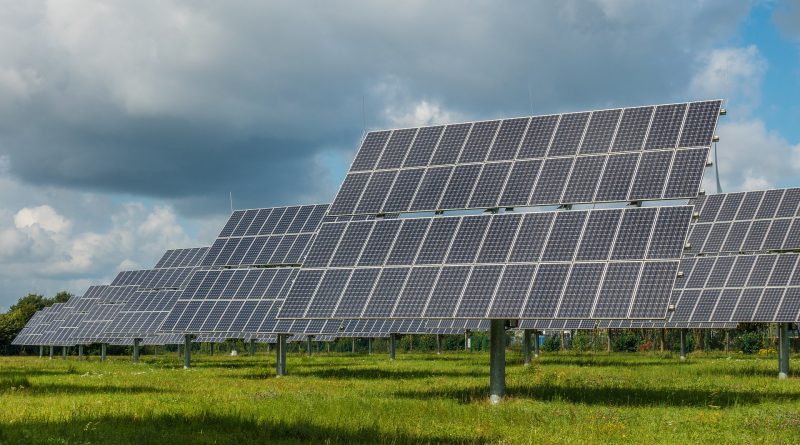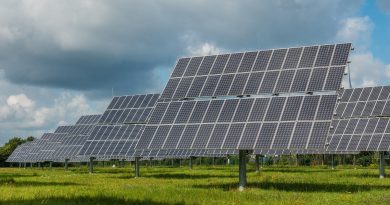Projected Demand for Solar Power Systems in 5 Years
Table of Contents
Introduction
The global demand for renewable energy has been on the rise in recent years, and one of the most promising sources is solar power. Solar power systems harness the energy of the sun to generate electricity and are seen as a clean and sustainable alternative to traditional fossil fuel-based power generation. As concerns over climate change and the need to reduce carbon emissions grow, the demand for solar power systems is expected to skyrocket in the next five years. In this article, we will delve into the projected demand for solar power systems and explore the factors influencing this growing trend.
Factors Driving the Demand
Several key factors contribute to the projected surge in demand for solar power systems in the next five years. The first and most significant factor is the decreasing cost of solar technology. Over the past decade, the price of solar panels and associated equipment has dramatically dropped, making solar power an increasingly affordable and economically viable option for both residential and commercial consumers. This cost reduction can be attributed to advancements in technology, improved manufacturing processes, and economies of scale.
Additionally, government incentives and policies also play a significant role in fueling demand. Many countries are implementing favorable policies, such as subsidies, tax credits, and feed-in tariffs, to promote the adoption of solar power. These incentives incentivize consumers and businesses to invest in solar power systems by reducing the upfront costs and providing attractive return-on-investment opportunities. As more governments worldwide pledge to transition to renewable energy, the adoption of solar power systems is only likely to increase further.
Another factor driving the demand for solar power systems is the growing awareness of environmental issues and the desire for sustainable energy solutions. As people become increasingly conscious of their carbon footprint and the impact of traditional energy sources on the planet, there is a shift towards greener alternatives. Solar power is seen as a clean and renewable energy source that can help reduce greenhouse gas emissions and combat climate change. This growing environmental consciousness is expected to drive the demand for solar power systems in the coming years.
Projected Growth and Market Trends
The projected demand for solar power systems in the next five years is incredibly optimistic. According to industry reports, the global solar power market is expected to grow at a compound annual growth rate (CAGR) of around 20% during the forecast period. This growth will be driven primarily by increasing installations of solar power systems in both residential and commercial sectors.
The residential sector will witness substantial growth due to several reasons. First, the cost of residential solar power systems has decreased significantly, making it more accessible to homeowners. Second, the availability of net metering and energy storage solutions allows homeowners to maximize the benefits of solar energy and reduce dependence on the grid. Lastly, the aesthetics of solar panels have improved, making them more visually appealing and acceptable for homeowners.
In the commercial sector, businesses are increasingly recognizing the financial and environmental benefits of solar power. By installing solar power systems, businesses can significantly reduce their electricity bills, increase operational efficiency, and enhance their corporate social responsibility. Additionally, governments and regulatory bodies are encouraging commercial establishments to adopt solar energy, leading to a surge in demand from this sector.
Emerging markets are expected to play a crucial role in driving the demand for solar power systems. Countries like China, India, and Brazil are witnessing rapid population growth, urbanization, and increased energy consumption. As these countries face a rising demand for electricity, solar power is seen as a viable and sustainable solution to meet this growing need. As a result, these emerging markets are likely to witness significant installations of solar power systems in the next five years.
Challenges and Opportunities
While the projected demand for solar power systems is promising, several challenges and opportunities must be considered. One of the primary challenges is the intermittent nature of solar energy. As the sun is not consistently available 24/7, there is a need for energy storage solutions to ensure a continuous power supply. The development of efficient and cost-effective energy storage technologies will be critical to meeting this challenge.
Another challenge is the limited availability of suitable land and roof space for solar installations. As the demand for solar power systems increases, the scarcity of prime locations for solar farms or large-scale rooftop installations may become a hindrance. However, innovative solutions such as building-integrated photovoltaics (BIPV) and floating solar farms could help overcome this limitation in densely populated areas.
The increasing demand for solar power systems also presents significant opportunities for job creation and economic growth. The solar industry has already become a major employer, providing jobs in manufacturing, installation, maintenance, and research and development. As the industry continues to expand, the demand for skilled professionals in these areas will rise, contributing to local economies and fostering innovation.
Conclusion
The projected demand for solar power systems in the next five years is expected to be robust, driven by decreasing costs, government incentives, and growing environmental consciousness. The residential and commercial sectors will witness significant growth in installations, along with emerging markets playing a crucial role. However, challenges such as intermittent energy supply and limited space for installations need to be addressed. The solar power industry presents tremendous opportunities for job creation and economic development, making it a vital component of the global transition towards a sustainable future. As solar technology continues to evolve and become more efficient, the potential for solar power systems to meet a substantial portion of the world’s energy requirements is becoming ever more promising.




